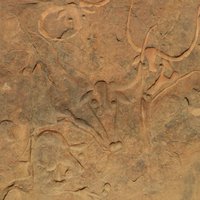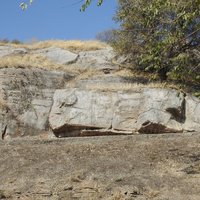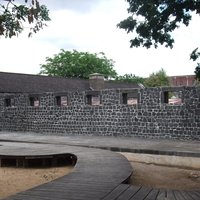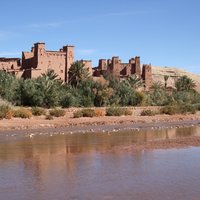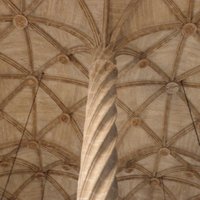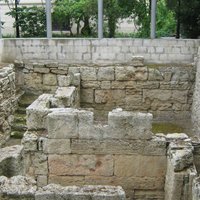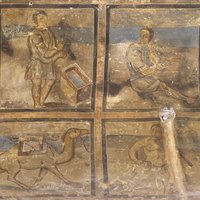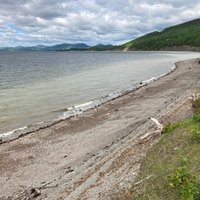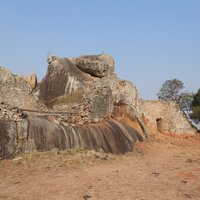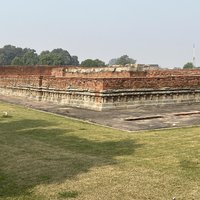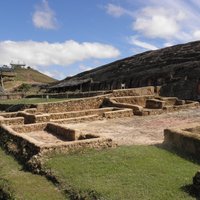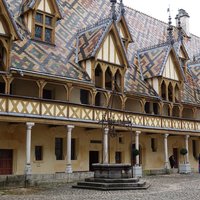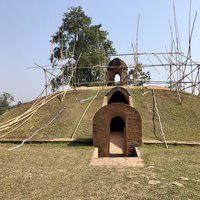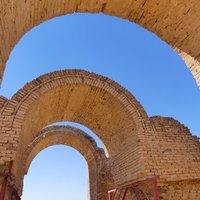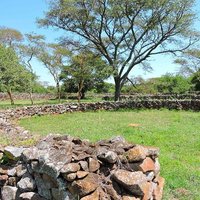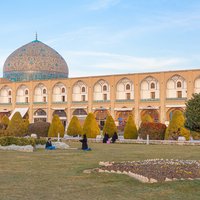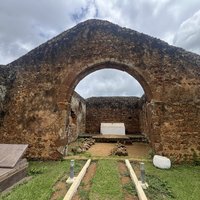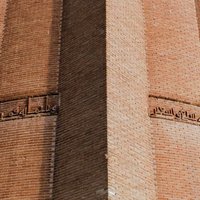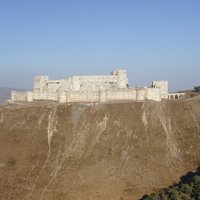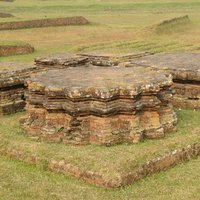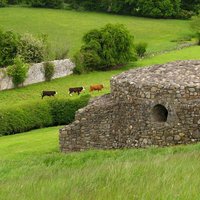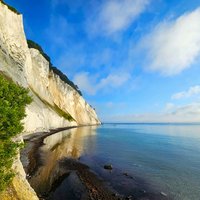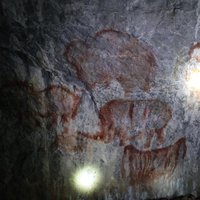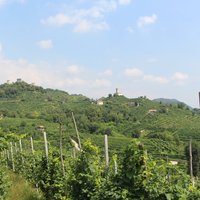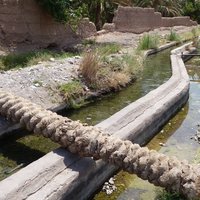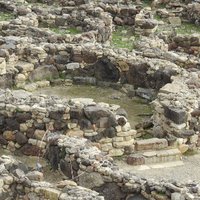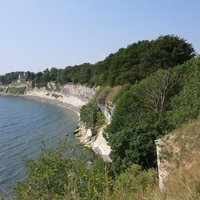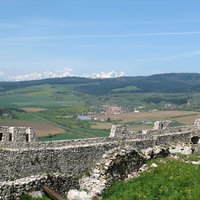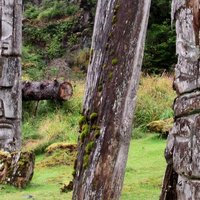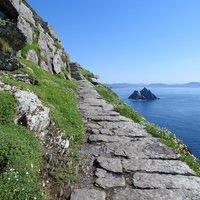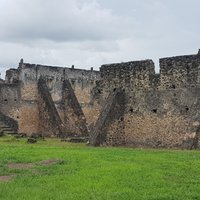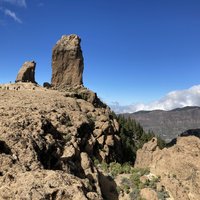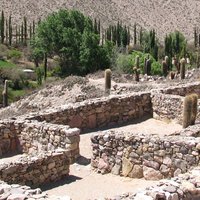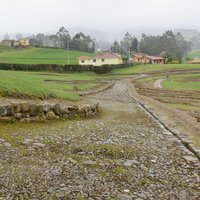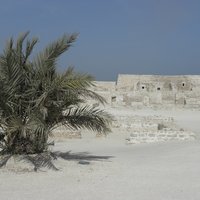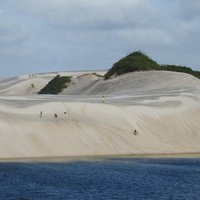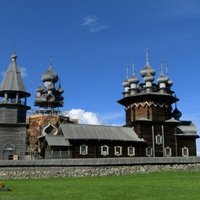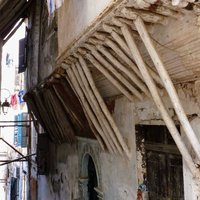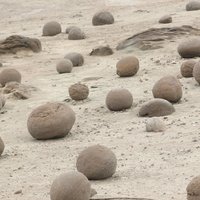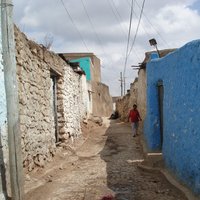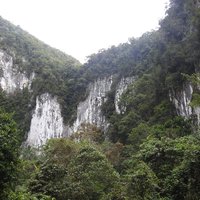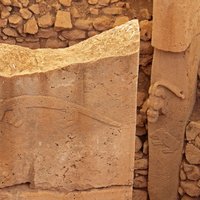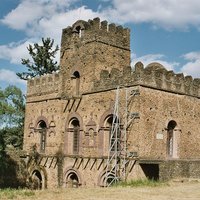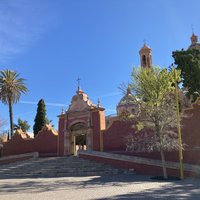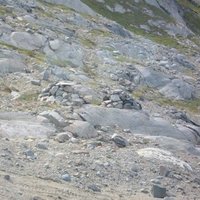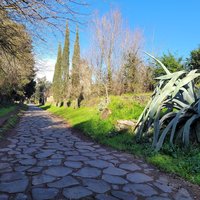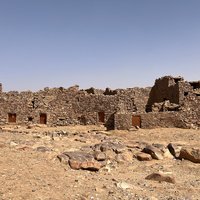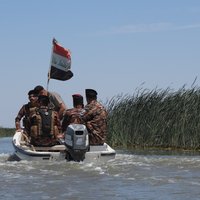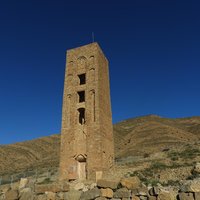Connected Sites
-
"Tassili" is a Tamahaq (a Northern Tuareg language) word meaning "Plateau" - in this case of the Ajjer tribespeople. Other uses of the word in Algeria include Tassili du Hoggar, Tassili de l’Immidir, Tassili de Tinrhert, and Tassili de Tamrit.
-
"Too" = "Mountain" in Kyrgyz. and shares a root of "tağ" with other Turkic languages as in "Nemrut Dag".
-
Wiki states that "The name Aapravasi Ghat, which has been in use since 1987, is a direct Hindi translation of "Immigration Depot". Aapravasi is the Hindi word for "immigrant", while ghat literally means "interface" reflecting the structure's position between the land and sea, and symbolically marking a transition between the old life and the new for the arriving indentured immigrants" (Wiki). Actually "Ghat" in this location translates adequately from Hindi simply as "Wharf"
-
Ksar or qsar (Maghrebi Arabic: قصر qṣer or ڭصر gser, plural qṣur; Berber: ⵉⴴⵔⵎ aghrem or ighrem, plural: igherman), plural ksars, qsars, ksour or qsour, is the North African term for "fortified village," from Arabic qaṣar (قَصَر), itself possibly loaned from Latin castrum. The term generally refers to a Berber fortified village." (Wiki)
-
The Silk Exchange in Valencia
-
A "Chora" is a Greek word that means “land” or “territory”. In this case it refers to the surrounding land under the control of the city, which was an ancient Greek colony founded in the 5th century BCE12. The chora consists of several square kilometres of ancient but now barren farmland, with remains of wine presses and defensive towers
-
Qusayr 'Amra or Quseir Amra, lit. "small qasr" or "castle" of Amra" (Wiki)
-
derived from Megouasag which means "red cliffs" in Micmac
-
-
"Mahavihara" is the Sanskrit and Pali term for a great vihara (centre of learning or Buddhist monastery)
See en.wikipedia.org
-
"Fuerte" is a fort in Spanish and "Samaipata" is a mountain refuge in Quechua.
-
A khanqah (Persian: خانقاه) or khangah (Persian: خانگاه; also transliterated as khankah, khaneqa, khanegah or khaneqah; also Arabized hanegah, hanikah, hanekah, khankan), also known as a ribat (رباط), is a building designed specifically for gatherings of a Sufi brotherhood or tariqa and is a place for spiritual practice and religious education" (Wiki)
See en.wikipedia.org
-
Holy Mountain or similar: Gebel / Jebel means mountain in Arabic, Barkal isn't of Arabic origin, but possibly Nubian, meaning sacred, holy or pure.
See sites.lsa.umich.edu
-
= Forest Cemetary (Skog + kyrkogård)
-
The official WHS name is "The Climats, terroirs of Burgundy". A "climat", when referring to viticulture in Burgundy, is a lieu-dit, "a French toponymic term for a small geographical area bearing a traditional name."
See en.wikipedia.org
-
Maidam = "burial" in Ahom
-
Ashur (Qal'at Sherqat): Qalat or kalata (قلعه) in Persian, and qal'a(-t) or qil'a(-t) (قلعہ, قلعة) in Arabic, means 'fortress', 'fortification', 'castle',[ or simply 'fortified place'.
See en.wikipedia.org
-
Ohinga means "settlement" in Lwoo. The AB ev states "Ohinga (Ohingni-plural) on the other hand, is a form of earth/stone built settlement or enclosure found in large numbers within the Lake Victoria region.".
-
"Meidan" means a town square or a public gathering place in Persian, Urdu, Arabic, Turkish, Bangla et al. It is often used as a part of the name of places that have historical or cultural significance.
-
The word Mbanza comes from the Kongo Bantu language and means "city" or "town". It was used to name the main urban centers of the Kingdom of Kongo (as also in as in M'banza-Soyo and Mbanza Ngungu) It was also used to refer to the "royal residence" or "palace" of the king.
-
"Gonbad" is a Farsi word that means a dome or a domed building. It is often used to describe the architectural style of mausoleums, palaces, mosques, and fire-temples.
-
The word "Crac" or "Krak" is derived from "karak", the Old Syriac word for “fortress” and as used by Crusaders for several of their Castles. The nearby "Qal'at Salah El-Din" uses the Arabic equivalent - "Qalat or kalata (قلعه) in Persian,[1] and qal'a(-t) or qil'a(-t) (قلعہ, قلعة) in Arabic, means 'fortress', 'fortification', 'castle',[ or simply 'fortified place'.
-
"A kaya (plural makaya or kayas) is a sacred site of the Mijikenda people in the former Coast Province of Kenya. Often located within sacred forests, a kaya is considered to be an intrinsic source of ritual power and the origin of cultural identity" (Wiki). "A Kaya contains the remains of fortified villages that were inhabited by the Mijikenda from the 16th century to the 1940s when they were abandoned ....because of social and economic changes ....(affecting the Mijikenda people (E.g).... colonial rule, the introduction of cash crops, the migration to urban areas, and the influence of Christianity and Islam. The kayas became less suitable for living and farming, and the Mijikenda moved to other places" (Bing AI)
See en.wikipedia.org
-
Vihara is "a Sanskrit word that means a Buddhist temple or monastery where monks live and practice. It originally meant a secluded place in which to walk. By transference it is a term that can also refer to one of the four states of mind that Buddhists aim to cultivate, namely love, compassion, sympathetic gladness, and equanimity. These are also called Brahma Vihara or divine abodes"
See en.wikipedia.org
-
"Brú" in Gaelic means "Palace" or "Mansion". "Medieval texts preserve the term Brug na Bóinde (‘mansion/place of hospitality of the Boyne’) which seems to have encompassed a complex of sites in the immediate vicinity of Newgrange, although originally it may have referred exclusively to the Newgrange mound". Linkage of the Neolithic sites of the area to places and stories in early Irish mythology grew stronger through the 19th/20th centuries and was "cemented" by adding the Gaelic name to the originally inscribed one in 2013 and framing the site's marketing and visitor experience around that term.
-
Klint = "a geological term of Scandinavian origin describing a coastal cliff or escarpment; the term has its roots in the Old Norse word "klint," meaning cliff."
-
The name "Shulgantash" comes from the Bashkir language. "Tash" in translation - a stone, and Shulgan - a river that flows into the White near the entrance to the cave. (Russian Wikipedia)
-
Tserkva (Церква) is the main word for "Church" in Ukrainian. Although churches in both Ukraine and Poland are inscribed only the Ukrainian word is used in the title. The "generic" word for a "Church" in Polish is "kościoł" (so the Wooden Churches of Southern Małopolska are called "kościoły drewniane" = Wooden Churches). The word "Cerkiew" is used specifically for Orthodox/Greco-Catholic churches which the Polish "Tserkvas" originally were (though most have subsequently become Roman Catholic).
-
"A trullo (plural, trulli) is a traditional Apulian dry stone hut with a conical roof. Their style of construction is specific to the Itria Valley, in the Murge area of the Italian region of Apulia. Trulli were generally constructed as temporary field shelters and storehouses or as permanent dwellings by small proprietors or agricultural labourers." Wiki.(The word is regarded as having derived from the Greek word τρούλος, cupola)
See en.wikipedia.org
-
The official name is "Le Colline del Prosecco di Conegliano e Valdobbiadene". "Colline" means "hills" in Italian.
-
"Qanāh (قناة) is an Arabic word that means "channel". In Persian, the words for "qanat" are kārīz (or kārēz; كاريز) and is derived from earlier word kāhrēz (كاهریز) (But) the word qanāt (قنات) is also used in Persian.
-
"Takht" in Farsi originally meant "Bed", then "top" or "throne". It is often used in Iran, Pakistan and India across different religions (including e.g Sikhism) as a prefix or suffix for names of places or institutions that have historical or religious significance
-
"The nuraghe or nurhag is the main type of ancient megalithic edifice found in Sardinia, developed during the Nuragic Age between 1900 and 730 B.C....plural: Logudorese Sardinian nuraghes, Campidanese Sardinian nuraxis [nuˈɾaʒizi], Italian nuraghi) ....An etymological theory suggests a Proto-Basque origin by the term *nur (stone) with the common -ak plural ending;[6] the Paleo-Sardinian suffix -ake is also found in some Indo-European languages such as Latin and Greek. Another possible explanation is that the term nuraghe came from the name of the Iberian mythological hero Norax and the root *nur would be an adaptation of the Indo-European root *nor" " (Wiki
See en.wikipedia.org
-
Klint = "a geological term of Scandinavian origin describing a coastal cliff or escarpment; the term has its roots in the Old Norse word "klint," meaning cliff."
-
"Spišský hrad" = Spiš Castle
-
Gwaay is an island in Haida
-
Sceilg is an Irish word that means craggy rock or skerry. It is often used as part of the names of places that have rocky islands or cliffs
-
"Kisiwani" is Swahili for "Island".
-
'Risco' means cliff in Spanish. Several riscos lie within the WHS, that is "formed of cliffs, ravines and volcanic formations".
-
The name quebrada (literally "broken") translates as a deep valley or ravine and is used in S America to designate a location where a stream which is usually dry or nearly so can be filled by heavy rain - in this case the Rio Grande. (Other place names using the word include Quebrada de las Conchas in Argentina, Quebrada de Cafayate in Peru, Quebrada de los Cuervos in Uruguay, and Quebrada Blanca in Chile)
-
Qhapaq=rich, powerful, opulent, wealthy, privileged; ñan=road, way, path, route in Quechua
-
Qalat or kalata (قلعه) in Persian, and qal'a(-t) or qil'a(-t) (قلعہ, قلعة) in Arabic, means 'fortress', 'fortification', 'castle',[ or simply 'fortified place'.
See en.wikipedia.org
-
From Ottoman Turkish طاغ (ṭağ, “a mountain, a hill”)
-
“bedsheets of Maranhão” in Portuguese
-
"Pogost (Russian: погост, from Old East Slavic: погостъ) is a historical term with several meanings in the Russian language...... The original usage applies to the coaching inn for princes and ecclesiastics with the word being similar to modern Russian gost' (гость), "guest". It is assumed that originally pogosts were rural communities on the periphery of the ancient Rus` state, as well as trading centers..... In the end of the 10th century pogosts transformed into administrative and territorial districts" (Wiki) Other examples of the word include e.g Porzhensky Pogost, which is within Russia's T List site "Testament of Kenozero Lake"
See en.wikipedia.org
-
"A kasbah (/ˈkæzbɑː/, also US: /ˈkɑːz-/; Arabic: قَـصَـبَـة, romanized: qaṣaba, lit. 'fortress', Arabic pronunciation: [qasˤaba], Maghrebi Arabic: [qasˤba]), also spelled qasba, qasaba, or casbah, is a fortress, most commonly the citadel or fortified quarter of a city"
See en.wikipedia.org
-
Ischigualasto comes from Cacán and means "where the moon rises".
-
"The four-meter-high limestone wall, or Jugol, encircling the old city was constructed from 1551 to keep invaders at bay". Jugol is a Harari word which means "wall" or "enclosure" and has come to mean the entire city within the walls.
-
"Gunung" = "Mountain" in Malay speaking countries
-
Tepe is "the Turkish and Persian word for 'Tell (archaeology)" (Wiki)......."a tell or tel (borrowed into English from Arabic: تَلّ, tall, 'mound' or 'small hill'), is an artificial topographical feature, a species of mound[a] consisting of the accumulated and stratified debris of a succession of consecutive settlements at the same site, the refuse of generations of people who built and inhabited them, and of natural sediment"
See en.wikipedia.org
-
"Ghebbi is an Amharic word that means compound or enclosure". So, "Fasil Ghebbi" means "Emperor Fasil's enclosure". Other uses include the Menelik Palace in Addis, known as "The Great Ghebbi".
See thinkafrica.net
-
Translates directly as "the Royal Inland road"..."was the northernmost of the four major "royal roads" that linked Mexico City to its major tributaries during and after the Spanish colonial era" (Wiki) others include the "Camino Real de los Tejas" to Texas via Monterrey.
-
"mysterious lakes" in Mongolian
-
Aasivissuit means 'summer camps' in Inuit.
-
"Via" is Latin for "road". It's repeated in the subtitle Regina Viarum (Queen of roads).
-
"Takht" in Farsi originally meant "Bed", then "top" or "throne". It is often used in Iran, Pakistan and India across different religions (including e.g Sikhism) as a prefix or suffix for names of places or institutions that have historical or religious significance
-
"Ksar or qsar (Maghrebi Arabic: قصر qṣer or ڭصر gser, plural qṣur; Berber: ⵉⴴⵔⵎ aghrem or ighrem, plural: igherman), plural ksars, qsars, ksour or qsour, is the North African term for "fortified village," from Arabic qaṣar (قَصَر), itself possibly loaned from Latin castrum. The term generally refers to a Berber fortified village." (Wiki)
-
"Ahwar" is Arabic for "Marshland"
-
Qalat or kalata (قلعه) in Persian, and qal'a(-t) or qil'a(-t) (قلعہ, قلعة) in Arabic, means 'fortress', 'fortification', 'castle' or simply 'fortified place'.
See en.wikipedia.org

